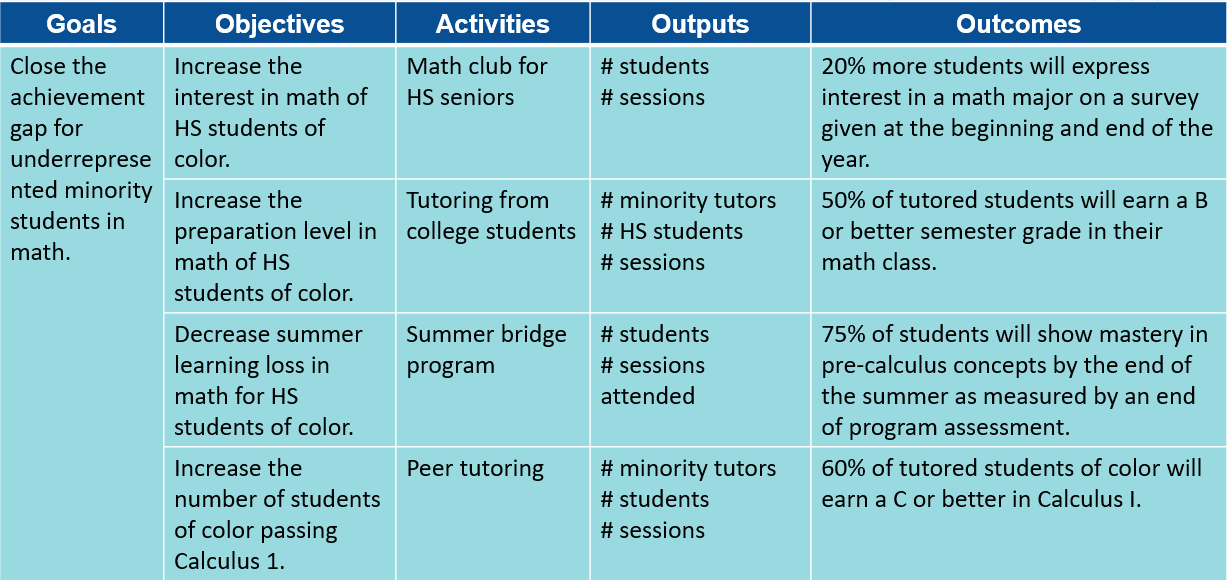Understanding Logic Models

Federal grant applications will often ask you to include a logic model within your proposal to clearly demonstrate what your project intends to do and what steps will be taken to get there. Even if a logic model is not explicitly asked for, it is good practice to get used to thinking in terms of logic models when crafting your proposal.
What is a Logic Model?
A logic model is a “systematic and visual way to present and share your understanding of the relationships among the resources you have to operate your program, the activities you plan, and the changes or results you hope to achieve” (W. K. Kellogg Foundation, 2004). In short, it is a graphic display of what your project intends to do and what it hopes to accomplish and impact.
How do I create a Logic Model?
To create a logic model, you will want to think in terms of your project’s goals, objectives, activities, outputs, and outcomes. While there is not one specific or ‘right’ type of logic model format, it is important to start by establishing a clear understanding of what the problem is that your grant proposal intends to address. This problem should be informed by data and research in some capacity and will be what you use to form a project goal. Your project’s goal establishes the “overall direction and focus for the program, defines what the program will achieve and serves as the foundation for developing program strategies and objectives” (CDC Evaluation Brief, No. 3a, 2008). Your goal should be reflective of your project’s setting, involved populations, and the issue at hand.
After forming a project goal, you will want to lay out the steps that will be taken to achieve the goal in the form of objectives and activities. Objectives elaborate on the overall goal and activities lay out what will be done to achieve the objectives. Outputs represent how progress will be measured and your outcomes specify the impact of the program. These can be short-term or long-term outcomes based on grant requirements.
Sample Logic Model:

